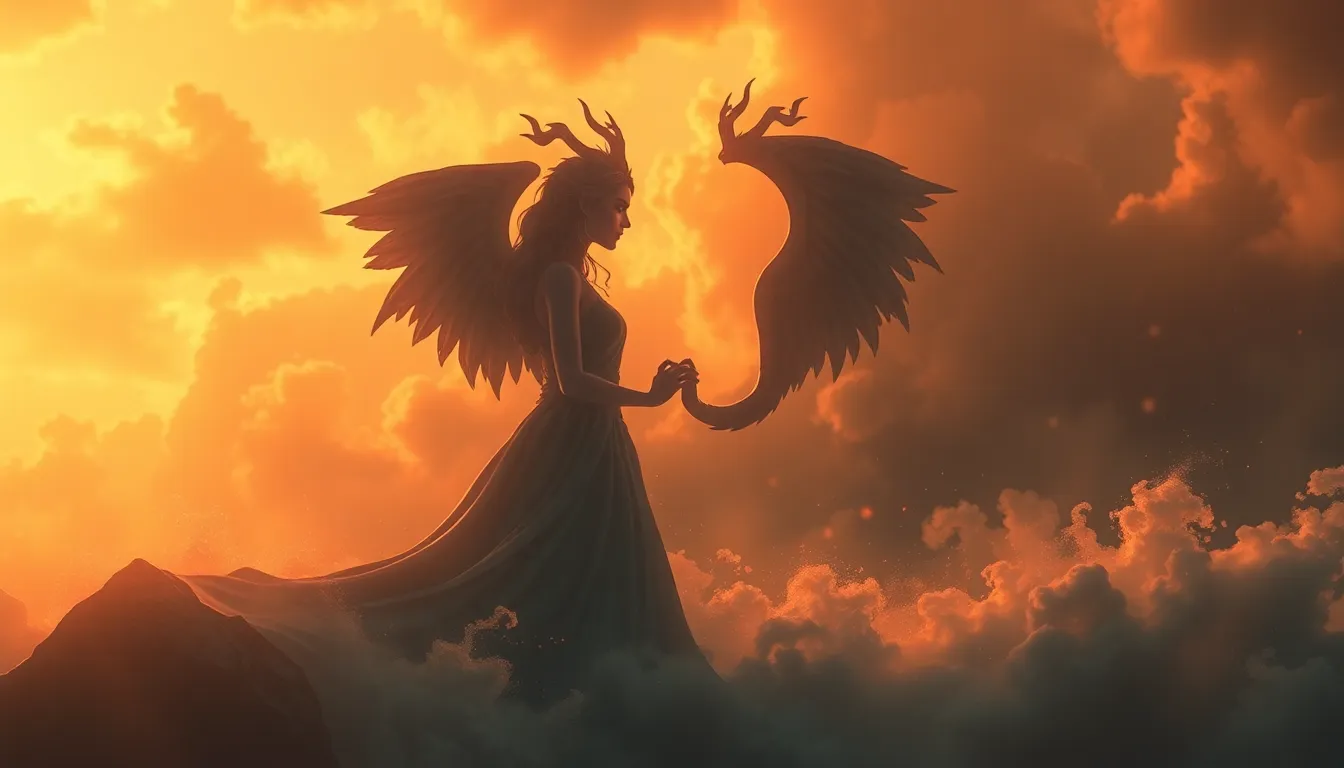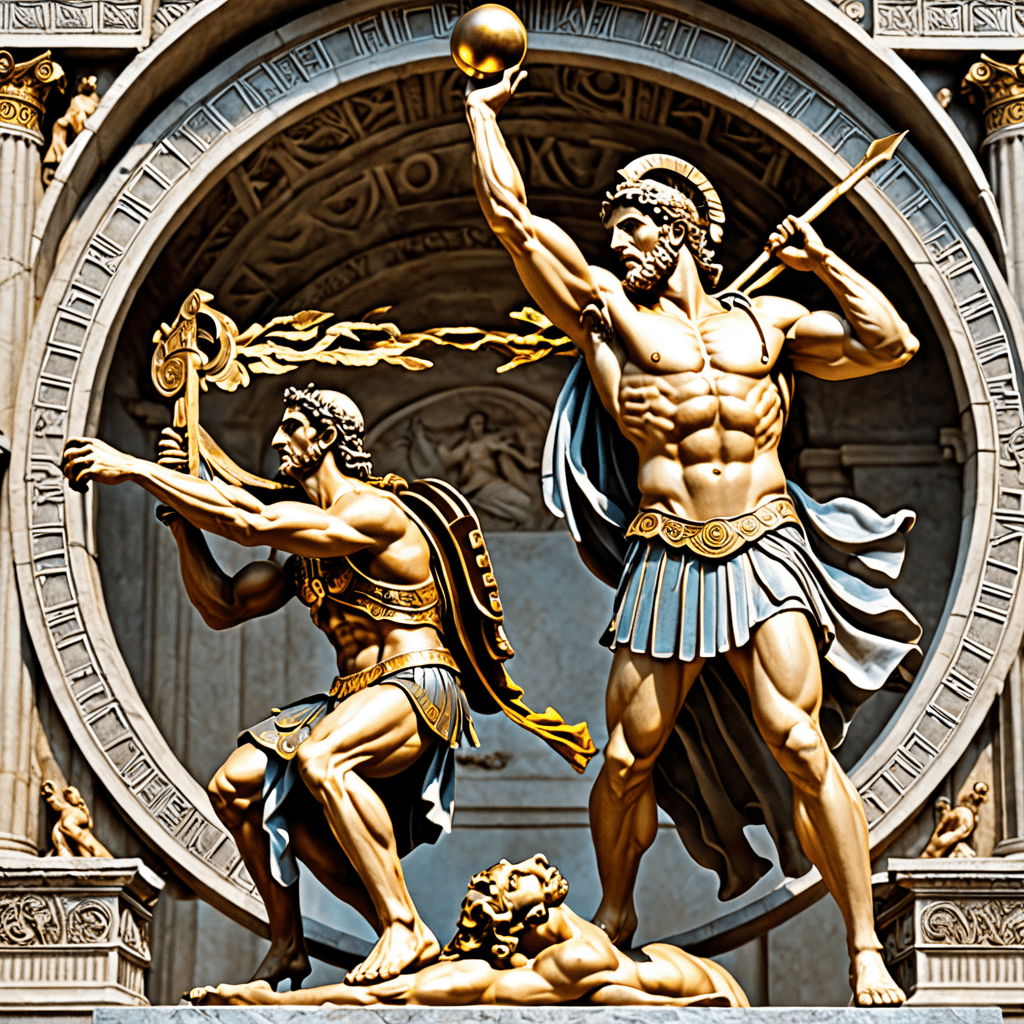Forbidden Love: Myths That Defied the Gods
Introduction: The Allure of Forbidden Love
Forbidden love has always held a significant place in mythology and storytelling, representing the struggle against societal norms and divine edicts. It encapsulates the passion and longing that arise when love is deemed unacceptable by external forces, be they cultural, social, or divine. This concept resonates deeply within human experience, often leading to dramatic narratives filled with both tragedy and triumph.
The allure of forbidden love highlights the complexities of human emotions, illustrating how love can transcend boundaries and challenge the status quo. In various cultures, these stories have shaped moral lessons and artistic expressions, influencing literature, art, and even modern media.
The Concept of Forbidden Love in Ancient Civilizations
Throughout history, various ancient civilizations have depicted themes of forbidden love in their myths and legends. These narratives often reflect the societal norms and taboos prevalent at the time, showcasing how love can flourish even in the face of adversity.
- Ancient Greece: Mythological tales often featured lovers from rival families or forbidden unions.
- Ancient Rome: Stories frequently depicted romantic entanglements that challenged societal expectations.
- Asian Civilizations: Various legends illustrate the clash between love and familial or cultural obligations.
In each of these cases, the lovers’ plight serves as a commentary on the rigidity of societal norms and the powerful, often uncontrollable nature of love.
Star-Crossed Lovers: The Archetype of Forbidden Love
The archetype of star-crossed lovers, best exemplified by Shakespeare’s “Romeo and Juliet,” embodies the essence of forbidden love. These narratives often share universal themes, including:
- Love in the face of adversity: The characters pursue their desires despite overwhelming odds.
- Tragic consequences: Their love often leads to dire outcomes, reinforcing the idea that love defies logic.
- Emotional resonance: These stories evoke deep feelings of empathy and connection, making them timeless.
Such tales resonate across cultures, reminding audiences of the enduring nature of love and the sacrifices often required to pursue it.
Greek Mythology: Love Against the Divine Will
In Greek mythology, several stories illustrate how love can defy the will of the gods. Two poignant examples include:
- Orpheus and Eurydice: Orpheus descends into the Underworld to retrieve his beloved Eurydice, challenging Hades himself. His tragic failure underscores the limits of love against divine authority.
- Pygmalion and Galatea: Pygmalion, a sculptor, falls in love with his creation. His passionate wish brings her to life, illustrating how love can transcend art and reality, defying the natural order.
These relationships not only reflect the struggles of the lovers but also serve as a reminder of the potential consequences of challenging the gods.
Roman Mythology: Passion and Consequences
Roman mythology also features its share of forbidden love stories, notably the relationship between Venus and Mars. Venus, the goddess of love, and Mars, the god of war, exemplify a love that defies societal expectations.
Despite the chaos their union brings, their passionate affair symbolizes the intertwining of love and conflict. However, their relationship is not without repercussions:
- Jealousy and betrayal: Their love incites jealousy among the gods, leading to conflict.
- Public scandal: Their affair becomes a topic of gossip, reflecting societal disapproval.
Their story serves as a cautionary tale about the consequences of passion that defies divine and societal norms.
Norse Myths: Love Beyond the Boundaries of Fate
Norse mythology presents a unique perspective on forbidden love, particularly in the tale of Freya, the goddess of love and fertility. Freya’s relationships often defy the boundaries set by fate and societal expectations.
Her love affairs, notably with the god Odin, challenge the rigid structures of the Norse cosmology, illustrating how love can alter destinies. In this mythology, fate and love are intricately intertwined, suggesting that love can be both a blessing and a curse:
- Fateful encounters: Characters often find themselves in love despite foreseen consequences.
- Divine intervention: The gods frequently intervene in mortal affairs, complicating the lovers’ journeys.
Eastern Myths: Forbidden Love in Asian Traditions
Asian traditions are rich with stories of forbidden love that often involve themes of sacrifice and cultural constraints. Two significant narratives include:
- The Butterfly Lovers: This Chinese tale tells of Liang Shanbo and Zhu Yingtai, whose love defies familial expectations and societal norms, ultimately leading to tragic consequences.
- Shah Jahan and Mumtaz Mahal: In India, this historical romance illustrates how love can transcend social divisions, culminating in the creation of the Taj Mahal as a symbol of enduring love.
These stories highlight the complexities of love and the sacrifices made in the name of devotion, illustrating how cultural norms can shape but not extinguish love.
The Role of Fate and Free Will in Forbidden Love Narratives
Forbidden love narratives often grapple with the philosophical implications of fate versus free will. Characters typically navigate their desires while contending with the push and pull of destiny:
- Destiny: Many stories suggest that love is predestined, leading individuals to their fateful encounters.
- Free will: Conversely, characters exercise their agency, making choices that defy societal expectations.
This dynamic creates tension within the stories, as characters must reconcile their desires with the consequences of their actions.
Lessons Learned: The Enduring Legacy of Forbidden Love Myths
The myths of forbidden love continue to impact modern literature and film, inspiring countless adaptations and reinterpretations. Their cultural significance lies in their exploration of profound emotional themes:
- Resilience: The enduring nature of love amidst adversity resonates with audiences.
- Social commentary: These narratives challenge societal norms and provoke reflection on contemporary issues.
In today’s society, the relevance of these myths remains strong, as they continue to inform our understanding of love, sacrifice, and the complexities of human relationships.
Conclusion: The Timeless Nature of Forbidden Love
Forbidden love narratives captivate audiences because they reflect the universal human experience of longing, desire, and the struggle against external forces. The intersection of love, myth, and human experience speaks to our deepest emotions and challenges us to reflect on our own lives.
As we navigate the complexities of love in our own worlds, these age-old stories remind us that the pursuit of love, even in the face of adversity, is a timeless and noble endeavor.



